Gardening, Kids, Out and About, Recipes
Living the Wild Life – Connecting with Nature through Foraging
Throughout June, we participated in the Wildlife Trusts 30 Days Wild challenge.
The closer we feel connected to nature, the better we take care of it. That is exactly why we warmly encourage everybody to join in and get everyone around them to take up the challenge too.
But it’s not just good for nature, it is good for you too! Feeling connected to the world around you, and spending time in nature are both known to improve mental health.
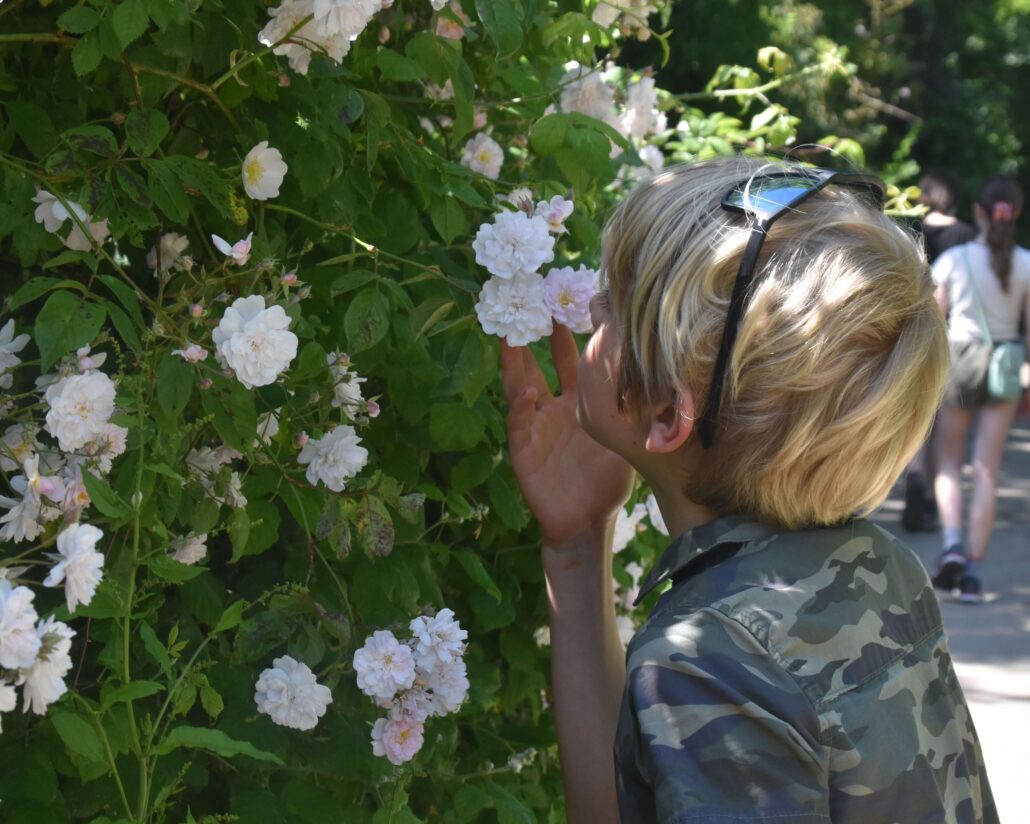
And just because June is over, doesn’t mean you have to wait for another year. You can find tips to keep growing your connection with nature on the Wildlife Trusts’ website and right here, in this blog post, where we’ll share some tips on foraging in the summer months.
We’ll shortly follow up with a recipe for ‘vlaai‘ – a lovely kind-of-tart-or-pie-but-different, which you can bake with many kinds of fruit, whether foraged in the wild, or grown in your own garden, so make sure to check back here soon!
The Wild Thing that gets you Free Stuff
Admittedly, doing one nature-connected thing each day wasn’t much of a challenge here, as I rather am outside than in anyway. It was more a lovely excuse; ‘Sorry, can’t do that boring thing just now, I still have to do something wild today.’
And it sounds great too: going wild. I definitely think we all need to get a bit wild every once in while.
A favourite way of getting up close and personal with nature is foraging. It’s also an easy way to entertain kids (in a responsible way) and will provide you with free food(or drink)-stuff. What’s not to like?
Indeed, I have written about it several times before. You may remember last month’s nettle soup, but did you know some of our earliest posts here were on foraged apple jelly and rosehip jam?
And as in the past I have written about both autumnal and spring foraged teas, I thought I might put up some teas for summer here. They are not just from flowers that are in season now, they also tend to have a light and flowery taste that perfectly suits the warmer days.
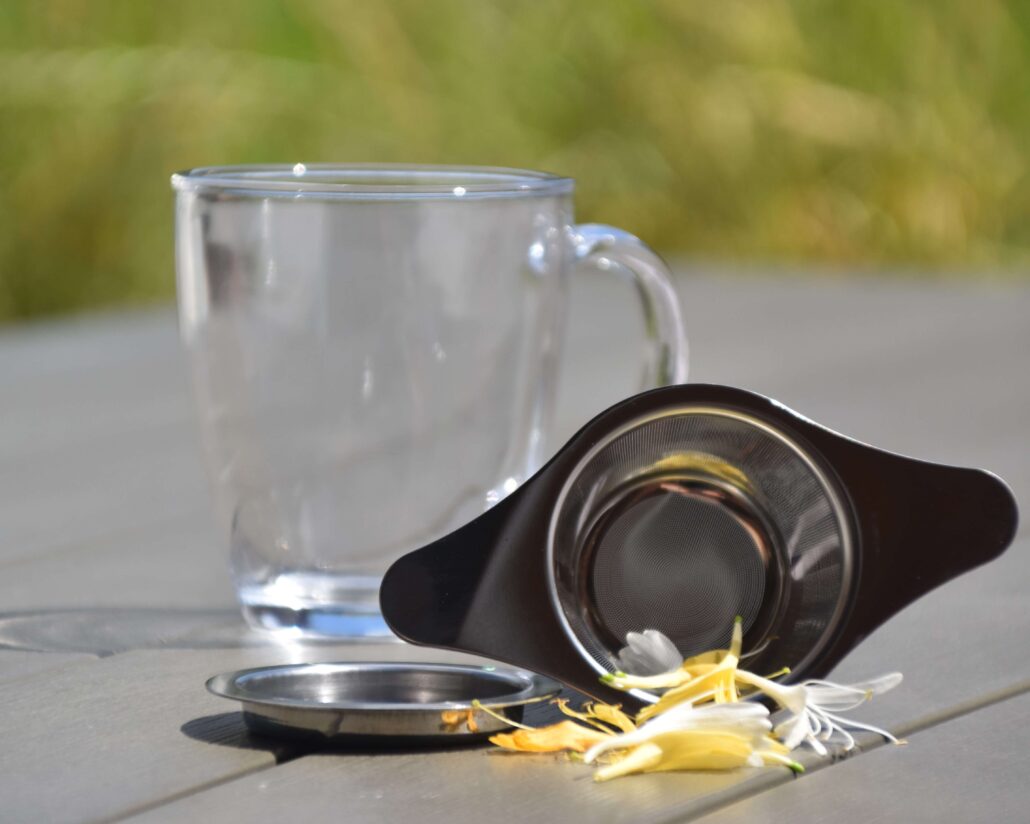
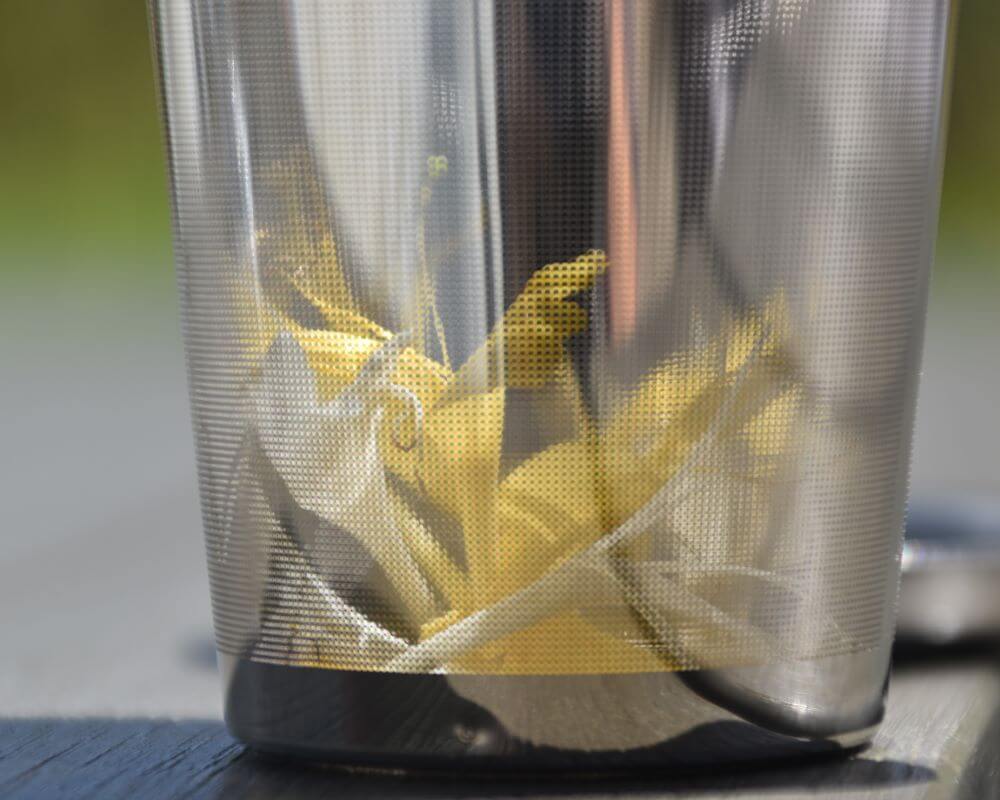
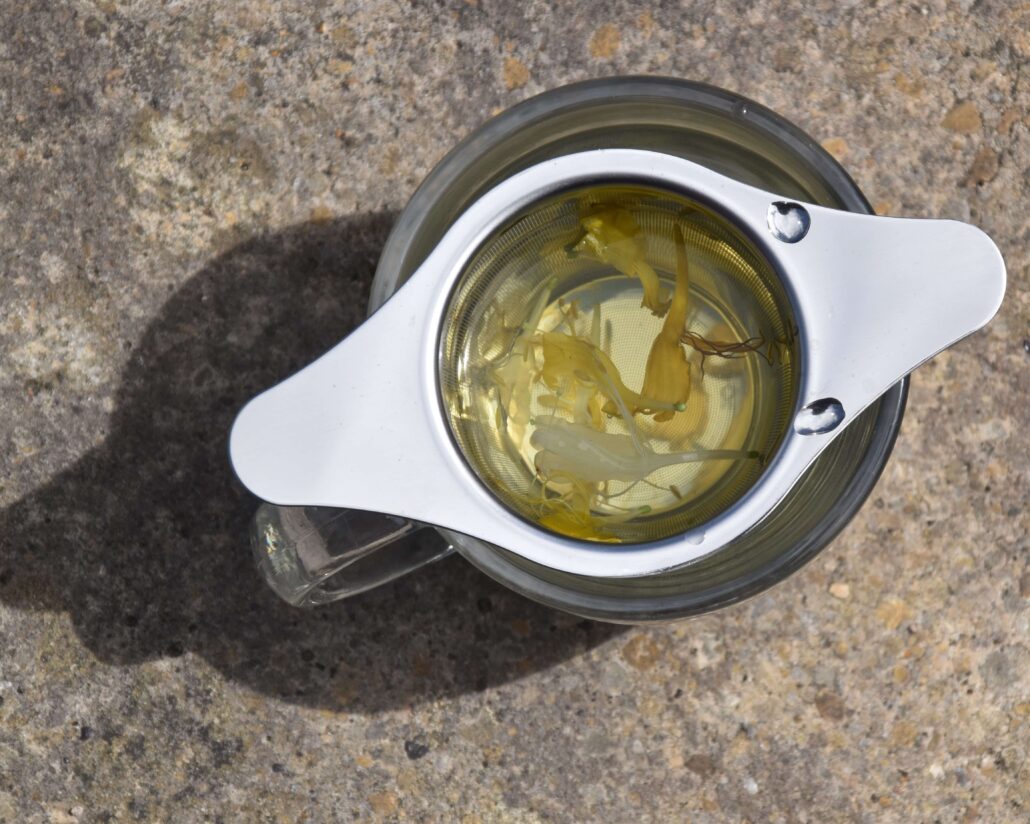
Foraged Teas in June and July
- Elder – Fresh elder flower is commonly used to make syrup or cordial. But you can use them to for a slightly sweet, flowery tea as well. And as the flowers are easily dried -just hang upside down in a dry place- you can pick them now, to make tea throughout the year. It is said to help with oncoming colds and flues too, so it might be handy to stock up some for when the seasons change again …
Missed the flowers and finding berries already? These can be used in jams, juices and syrup too. But beware, opposed to the elders growing in the US, the ones native to the UK typically contain sambunigrine. This makes them slightly poisonous when used raw. They are perfectly safe for consumption after cooking, though. If, however, you come across an American recipe tossing raw elderberries into, for example, a smoothie, think twice. You will always need to cook your elderberries!
- Chamomile and Pineapple weed – Chamomile is traditionally used to make a soothing tea, ideal to wind down before going to bed. Likewise, pineapple weed, or wild chamomile, can be used. It looks basically like the same thing, but with the petals removed. The wild chamomile has a slightly sweeter taste, with a hint of … pineapple, yes. Only if you pick young flowers, though. They do get bitter when growing older (much like humans, I guess).
- Rose – Petals from all kinds of roses are edible, the wild growing dog rose not excluded. You can use them in salads, vinegars, jams and to decorate cakes, to name a few things. But you can also use them to brew a cup of tea. They tend to have a mildly sweet flavour.
- Honeysuckle – Flowers of the honeysuckle give, as you may have guessed, a honey flavour to your brew. You can use the wild ones as well as the garden varieties, though the latter may have slightly less taste – as they are relatively full of flavour to begin with, this shouldn’t be a problem. Just add a flower or two more.
If you have loads, you can also use them in salads, on cakes, in jams or to make cordial.
Not sure how to Forage?
You can find some general tips on foraging in our previous posts on foraging, as last month’s one, or on the website of the Woodland Trust . Here you can also find more detailed information on identifying edible plants in June and July.
How do these Plants turn into Tea?
Freshly foraged teas work just the same as your regular old tea. It’s a matter of infusion. Just pour over boiling water and let steep to taste. You may want to give them a cold rinse before use, though, if you’re not sure what they’ve been exposed to while growing.
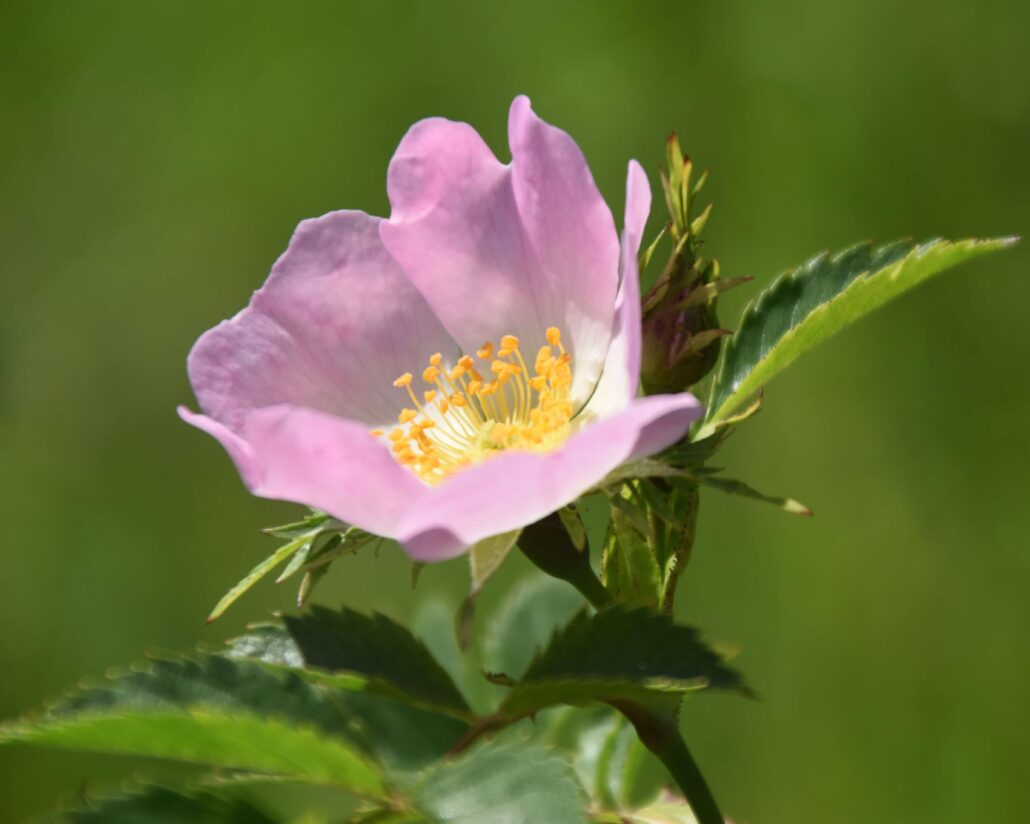
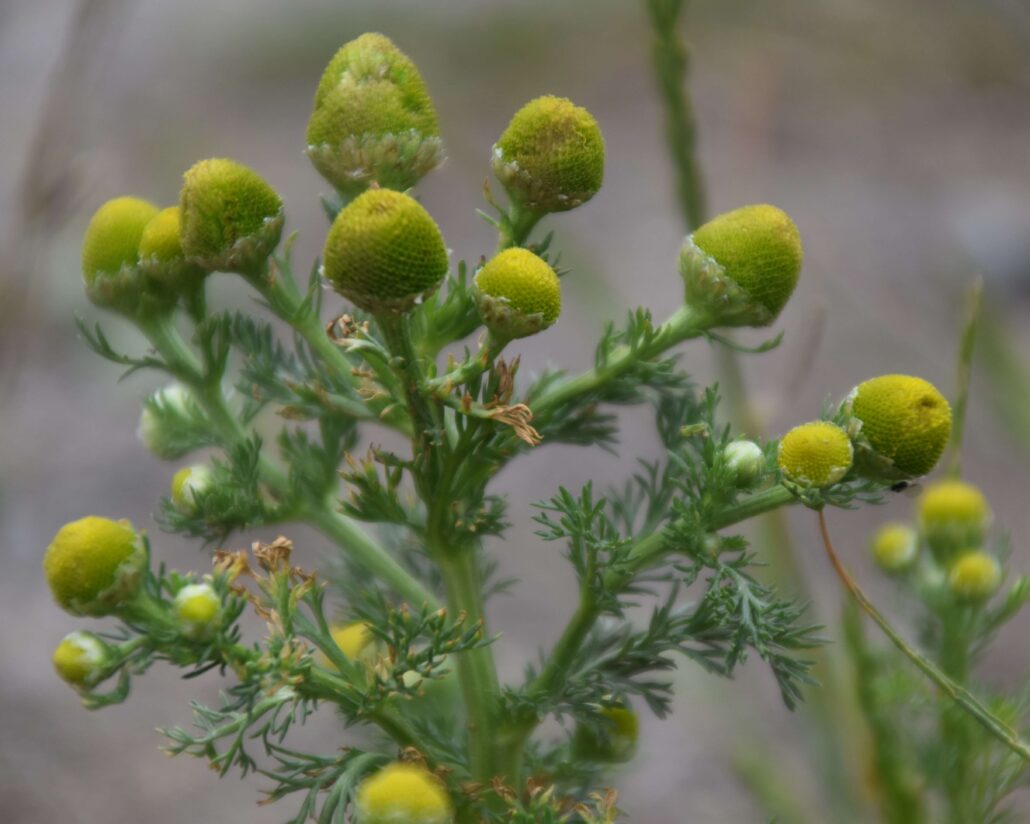
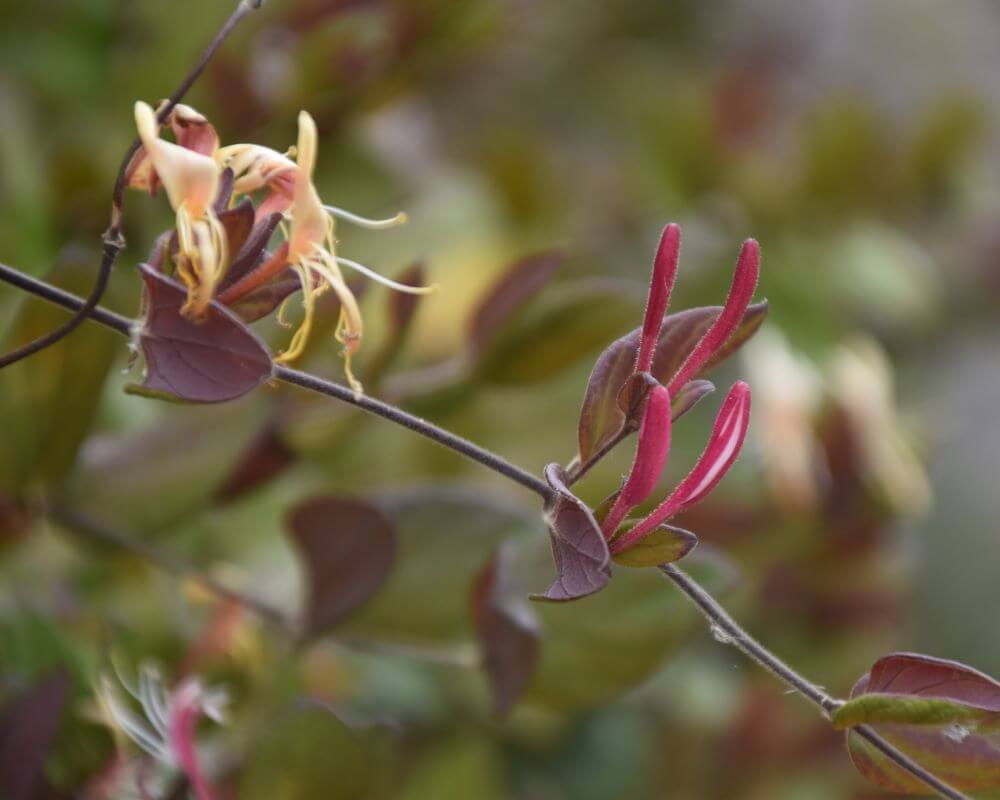
P.S.: Looking for the ideal infuser to keep things easy and mess free? I would definitely recommend a cup infuser as its larger size and fine mesh make it so easy to toss anything in, without any bits staying behind in your tea. But you may prefer something else entirely.

